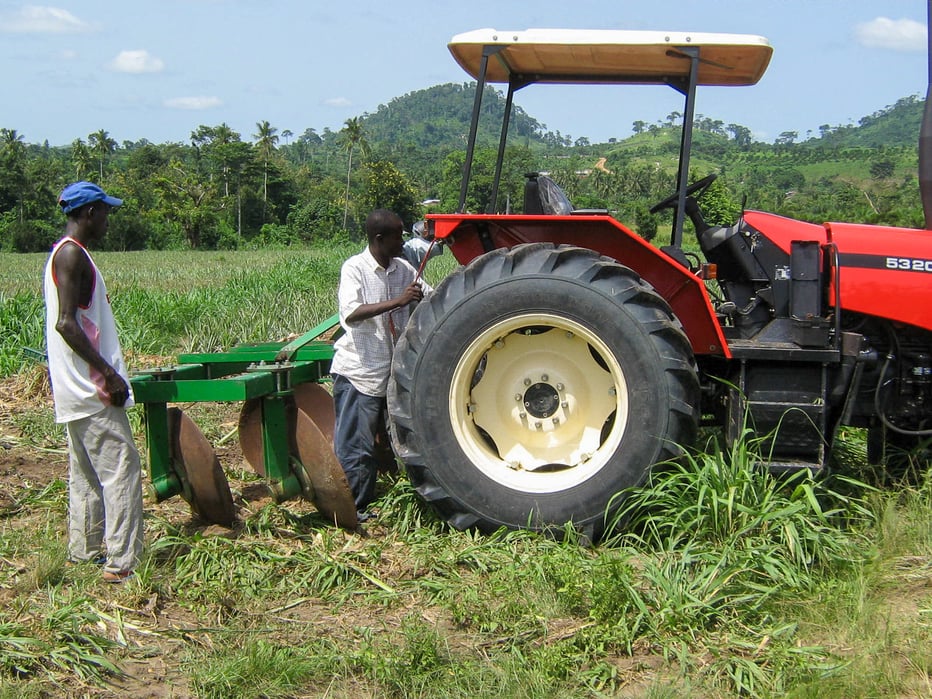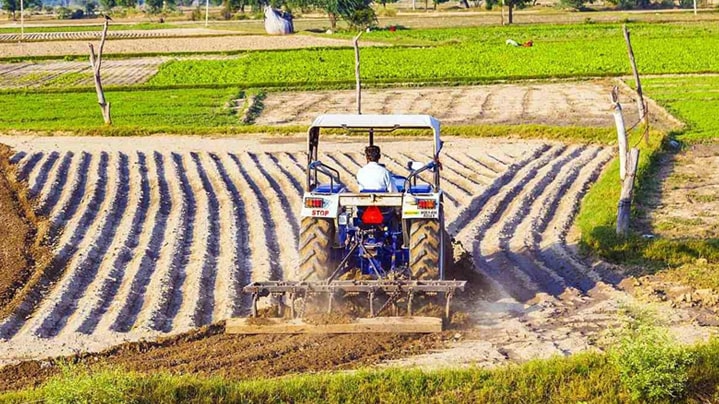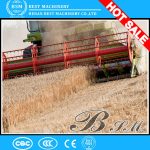Imagine transforming a piece of rural land into a thriving, small-scale mechanised farm. This isn’t just a dream but a feasible reality that can boost your income, enhance food security, and contribute positively to your community.
If you’re wondering how to turn this vision into action, you’re in the right place. This article is designed to walk you through the essentials of setting up a small-scale mechanised farm in rural areas. You’ll discover the benefits of using machinery to increase efficiency and yield, learn about the necessary equipment that won’t break the bank, and get practical tips on overcoming common challenges.
By the end, you’ll feel equipped and inspired to start your own farming venture. Keep reading, and unlock the potential of your rural landscape.

Site Selection
Selecting the right site is crucial for a small-scale mechanised farm. Consider soil quality, water availability, and accessibility. These factors ensure efficient operations in rural areas.
Building a small-scale mechanized farm in rural areas requires careful planning and decision-making. One of the most critical steps in this process is site selection. Choosing the right location for your farm can significantly impact its success and sustainability. The site you select will determine factors like soil quality, accessibility, and water availability.Location Accessibility
When selecting a site, consider how easily you can access it. Is it close to main roads? This is vital for transporting goods and accessing resources. Think about the ease of travel for you and your workers. A site that’s hard to reach can lead to increased costs and delays.Soil Quality
Assessing soil quality is crucial. Test the soil to understand its nutrient composition. Good soil will improve crop yield and reduce the need for chemical fertilizers. Poor soil can lead to stunted plant growth and increased costs. Do you know the local history of the land? It might reveal if the soil has been overused or contaminated.Water Availability
Water is essential for farming. Check if the site has reliable water sources like rivers or wells. Consider the cost and feasibility of water management systems. Is there a risk of drought in the area? Having a consistent water supply can save you time and money.Climate Conditions
Climate plays a significant role in farming success. Investigate the weather patterns of the area. Are there frequent storms or extreme temperatures? These factors can affect crop growth and machinery operation. Align your farm’s needs with the local climate for optimal results.Community And Market Proximity
Being close to a community can offer advantages. It provides access to labor and potential partnerships. Additionally, proximity to markets allows for quicker sales and fresher products. How far is the nearest market? This can influence your distribution strategy and overall profitability.Personal Experience: Learning From Mistakes
I once chose a site based solely on its scenic views. It was far from markets and had poor soil quality. This mistake taught me the importance of thorough site evaluation. Have you made decisions based on aesthetics rather than practicality? Learning from such experiences can guide better choices in the future.Choosing the right site for your farm isn’t just about ticking boxes. It’s about envisioning your future and ensuring every aspect of the land supports your goals. What other factors are you considering that could affect your farm’s success?

Essential Equipment
Small-scale mechanised farms in rural areas need essential equipment. Tractors, plows, and seeders are crucial for efficient farming. These tools help farmers save time and increase productivity.
Building a small-scale mechanized farm in rural areas can transform the farming experience, boosting productivity and efficiency. Essential equipment plays a crucial role in this transformation. It helps you get the most out of your land and labor. But what equipment do you truly need? Let’s take a closer look at some key pieces of machinery and tools that can make a significant difference in your farming venture.Tractors
Tractors are the backbone of any mechanized farm. They make it easier to plow, plant, and harvest. You might think of a tractor as a big investment, but it pays off with time and labor saved. Consider a compact or utility tractor for small-scale operations. They are versatile and can handle various tasks with different attachments.Plows And Harrows
Turning the soil is a fundamental farming task. Plows help break the ground, preparing it for planting. Harrows come next, breaking up clods and smoothing the soil. Using these tools ensures better seed contact and growth. Choose equipment that matches your soil type and tractor size for best results.Seed Drills
Efficient planting starts with a good seed drill. It places seeds at the right depth and spacing, maximizing yield. With a seed drill, you reduce the labor and time involved in manual planting. It also ensures uniform crop growth, making management easier.Irrigation Systems
Water is life, especially on a farm. A reliable irrigation system ensures your crops get the water they need. Whether you choose drip, sprinkler, or surface irrigation, it impacts crop health and productivity. Think about your water source and crop type when selecting a system.Harvesters
When crops are ready, harvesters step in to save time and effort. They efficiently collect crops, reducing waste and labor costs. For small-scale farms, consider a multi-crop harvester. It allows you to harvest different types of crops without needing separate machines.Storage And Transport Equipment
Once harvested, storing and transporting crops is crucial. Proper storage keeps your harvest safe from pests and spoilage. Transport equipment helps you move produce to markets or storage facilities. Consider investing in trailers and storage bins suited to your farm size. Have you thought about how each piece of equipment can impact your daily operations? Making informed choices now can set your farm up for success. The right tools not only enhance productivity but also make farming a more enjoyable and sustainable pursuit.Crop Planning
Crop planning is essential for small-scale mechanized farms in rural areas. It involves selecting suitable crops, scheduling planting, and optimizing resource use to enhance productivity. Efficient crop planning boosts yields and supports sustainable farming practices, making it a key aspect of modern agriculture.
Planning your crops is one of the most crucial steps in building a small-scale mechanised farm. It’s not just about selecting which crops to plant, but also about timing and resource allocation. Proper crop planning can make the difference between a bountiful harvest and a failed season. When I first started my small farm, I underestimated the importance of planning. I planted crops without considering the seasons, leading to a lot of wasted effort. Learning from experience, I realized the need to plan meticulously, which made the subsequent seasons more productive.Understanding Your Soil And Climate
Your soil and climate dictate what crops will thrive on your farm. Conduct a soil test to understand its pH and nutrient levels. This information helps in selecting crops that are best suited for your soil type. Consider the climate in your area. Some crops require specific temperatures and rainfall patterns. By aligning your crop choices with the local climate, you improve your chances of a successful yield.Choosing The Right Crops
Choose crops based on market demand and suitability to your environment. Look for crops that have a steady demand in your local market. This ensures that your hard work translates into sales. Select crops that work well together. Some crops can benefit each other when planted in proximity, known as companion planting. For example, planting beans alongside corn can improve soil nitrogen levels, benefiting both crops.Creating A Crop Rotation Plan
Crop rotation is vital for maintaining soil health and reducing pest infestations. Plan to rotate your crops so that no single crop is planted in the same spot every year. A good rotation plan can prevent nutrient depletion in the soil. It also disrupts pest cycles, reducing the need for chemical interventions. By rotating crops like legumes, which fix nitrogen, with nutrient-demanding crops like maize, you can maintain a balanced soil.Scheduling Planting And Harvesting
Timing is everything in farming. Create a calendar for planting and harvesting based on the growing season of each crop. This helps in managing resources effectively and avoiding overlaps. Consider the maturity period of each crop. Stagger planting dates to ensure a consistent supply of produce throughout the season. Ask yourself, are you maximizing your land’s potential by planting at the right times?Resource Allocation And Budgeting
Allocate your resources wisely. Consider the costs of seeds, fertilizers, and machinery. Create a budget that accounts for these expenses while leaving room for unexpected costs. Prioritize crops that give the highest return on investment. Keep track of your spending and adjust your plans if needed. This will help you to stay financially sustainable.Engaging in crop planning might seem daunting at first, but it’s your roadmap to a successful farm. Have you taken the time to map out your crop plan for the upcoming season? Your efforts here lay the foundation for a thriving small-scale mechanised farm.
Sustainable Practices
Building a small-scale mechanised farm in rural areas supports sustainable agriculture. It boosts productivity while conserving resources. This approach reduces manual labor and enhances crop yield, benefiting local communities.
Building a small-scale mechanized farm in rural areas offers a unique opportunity to embrace sustainable practices. In a world increasingly concerned with environmental impact, adopting sustainable methods not only preserves resources but also enhances farm productivity. You can make a difference by integrating these practices into your farming operations, balancing the needs of today without compromising the future.Understanding Crop Rotation
Crop rotation is a simple yet effective technique. By alternating different crops on the same land, you prevent soil depletion and reduce pest buildup. Imagine growing legumes one season and then switching to grains the next; this variety naturally enriches the soil with essential nutrients.Utilizing Natural Pest Control
Relying on chemical pesticides can be harmful. Instead, consider natural alternatives like neem oil or introducing beneficial insects like ladybugs. These methods not only protect your crops but also maintain ecological balance.Water Conservation Techniques
Water is a precious resource, especially in rural farming. Implementing drip irrigation systems can dramatically reduce water usage. Have you thought about rainwater harvesting? It’s a cost-effective way to conserve water and ensure a steady supply.Composting And Soil Health
Healthy soil is the foundation of a thriving farm. Composting is an excellent way to enrich your soil with organic matter. Start a compost pile using kitchen scraps and yard waste, and watch your soil transform.Renewable Energy Integration
Consider integrating renewable energy sources like solar panels to power your farm. Not only does this reduce reliance on fossil fuels, but it also cuts operational costs. Imagine running your irrigation pumps on solar energy—sustainable and cost-effective.Community Involvement
Engage with your local community to enhance sustainable practices. Share resources, tools, and knowledge with fellow farmers. Could forming a cooperative help achieve collective goals and amplify the impact of sustainable farming? Embracing these sustainable practices is not just about being environmentally conscious. It’s about building a resilient farm that can thrive for generations. What changes will you make today for a better tomorrow?
Conclusion
Building a small-scale mechanized farm offers many benefits. It boosts productivity and supports local communities. Farmers can access better tools and techniques. This leads to healthier crops and higher yields. With careful planning, costs remain manageable. Local resources can provide much-needed support.
Small farms become more sustainable. They can meet the needs of their community. Consider the environment and available technology. Both play crucial roles in success. The journey requires effort and dedication. Yet, the rewards are worth it. A better future for rural farmers and their families.
That’s the goal.



